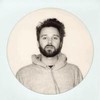Tiananmen Square, May 1989.
The second day of the hunger strikes. May, 1989.
A film crew captures the action on Tiananmen square. May, 1989.
Students spending a night on the square.
Wu’er Kaixi, leader of the Beijing Spring, gives an interview in a tent. Weakened by the hunger strike, he breathes with an oxygen mask.
A crowd protect the students by blocking the army and stopping them from reaching the square..
An early morning on Tiananmen Square.
A protester wrapped in a flag.
A press conference in front of the Military Museum of the Chinese People's Revolution.
Soldiers join the student demonstrators heading towards Tiananmen Square to show their solidarity.
